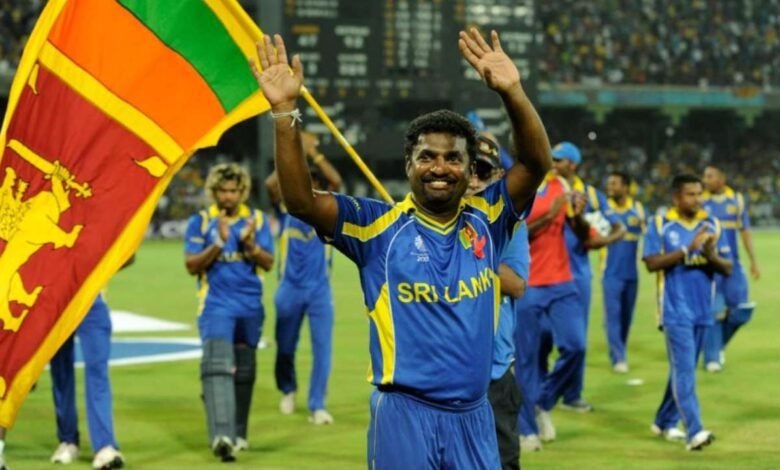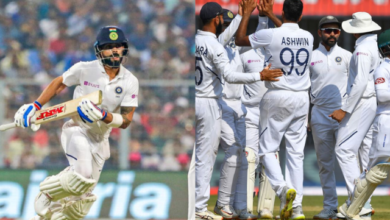
Muttiah Muralitharan is regarded as one of the greatest cricketers in history, and his journey to the top is marked by both triumph and controversy. Born in Kandy, Sri Lanka in 1972, Murali grew up in a family that faced the consequences of the ethnic conflict that plagued the country.
In August 1977, when Murali was just five years old, his father was attacked, and the family’s biscuit company was burned down in an anti-Tamil pogrom. Despite these challenges, Murali’s talent for cricket would take him on a journey that would see him become a legend of the sport.
Here is what happened when Muttiah Muralitharan arrived in international cricket
Murali made his Test debut for Sri Lanka in August 1992, and his unconventional bowling action immediately raised eyebrows. His unique style of bowling, which featured a distinctive kink in his elbow, made his deliveries difficult to read and earned him a reputation as a “mystery spinner.” However, it also led to controversy when he was no-balled by umpire Darrel Hair at the MCG in December 1995.
The incident at the MCG prompted Murali to undergo biomechanical testing for the first time in February 1996. The results of the tests showed that the kink in his elbow created an “optical illusion of throwing,” and he was cleared to continue playing. However, the controversy surrounding his action continued to dog him, and he was no-balled again by Ross Emerson in Adelaide in January 1999.
How Muttiah Muralitharan defied the steepest odds
Despite the controversy, Murali’s performances on the field continued to improve. 1998 was a breakthrough year for him, as he took 65 Test wickets at an average of 18.47, including 16 wickets at the Oval. In September 2002, he played an exhibition match in Jaffna during a ceasefire in the civil war, demonstrating his commitment to his country and his people.
In March 2004, match referee Chris Broad reported Murali’s doosra, a delivery that spun away from right-handed batsmen to the International Cricket Council (ICC). The doosra was subsequently banned after it was found to exceed the five-degree threshold at the time for spinners. However, Murali’s determination and hard work paid off, and the ICC later heard the evidence from three biomechanics experts who concluded that 99% of all bowlers used to extend their elbows and many exceeded ten degrees. As a result, Murali’s doosra was made legal again in October 2004.
Murali’s success on the field was not limited to his bowling, as he also contributed to society through his charity work. In 2005-06, his ‘Foundation of Goodness’ built 1024 homes for tsunami victims in Sri Lanka, demonstrating his commitment to improving the lives of his fellow Sri Lankans.
Despite the controversy surrounding his bowling action, Muralitharan continued to perform at the highest level for Sri Lanka. In 2006, he had his most successful year in Test cricket, taking 90 wickets at an average of 16.90. He played a crucial role in Sri Lanka’s Test series wins in England and New Zealand.
Here comes the crescendo
Muralitharan’s achievements in Test cricket continued to mount. In December 2007, he surpassed Shane Warne’s Test wicket tally of 708 to become the leading wicket-taker in the format. Two years later, in February 2009, he passed Wasim Akram’s record of 502 wickets to become the leading wicket-taker in ODIs as well.
Muralitharan’s incredible career came to an end in July 2010 when he retired from Test cricket after taking his 800th wicket. He ended his career with 800 Test wickets, 534 ODI wickets, and 13 wickets in T20Is. He remains the leading wicket-taker in both Test and ODI cricket.
After retiring from cricket, Muralitharan turned his attention to philanthropy. He established the “Foundation of Goodness,” which built 1,024 homes for tsunami victims in Sri Lanka. He also became a mentor and coach for the Tamil Union Cricket and Athletic Club in Colombo.
In 2021, Muralitharan was inducted into the International Cricket Council’s Hall of Fame, joining the likes of Sir Donald Bradman, Sir Vivian Richards, and Shane Warne. His legacy as one of the greatest spin bowlers in the history of cricket is secure, and his journey from the violent streets of Kandy to the top of the cricketing world is nothing short of remarkable.



